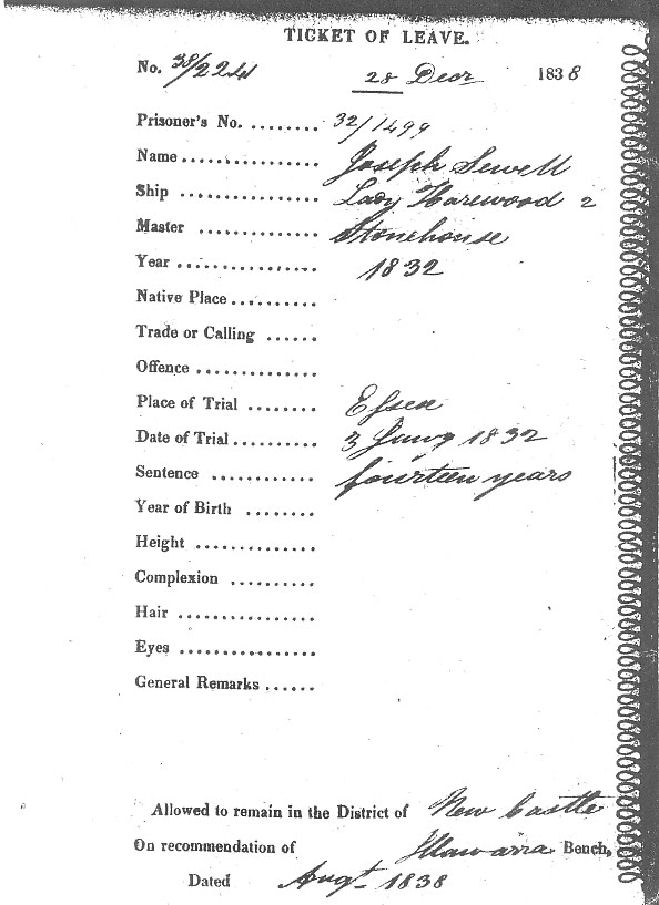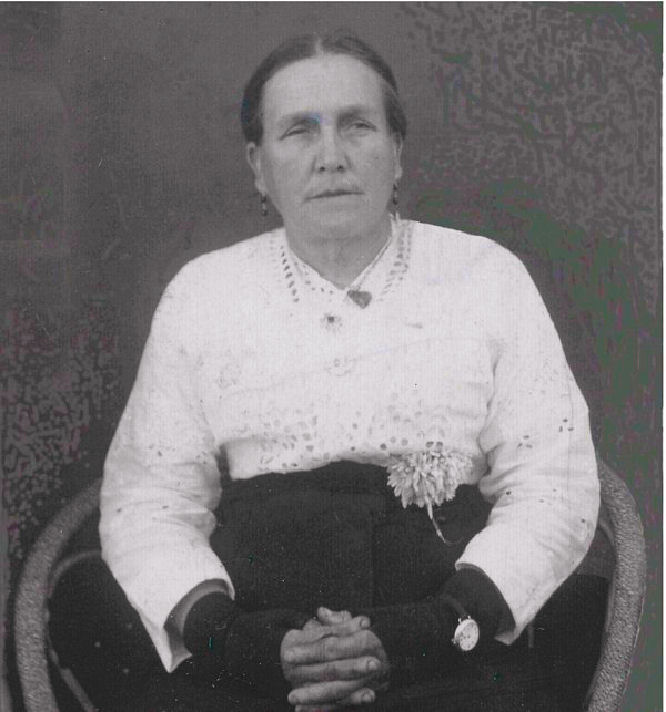

This article was originally published in the August 2009 edition of Soul Search, the journal of The Sole Society
Some time ago an Australian correspondent, Merv Webster, contacted us regarding an ancestor, Joseph Sewell, bc 1808.
We advised he appeared to be the youngest of six children born to Edward & Frances, nee Lark, in Chelmsford. Joseph’s mother died in 1820 when he was about 12 & his father when he was 21. We could provide a little information about his parents & siblings but had no further information regarding Joseph. However, Merv discovered that after both Joseph’s parent’s died, he managed to fall foul of the law and appeared before the courts on two occasions. The second, being on the 3rd of January 1832, when he was tried in Chelmsford aged twenty-four, for the offence of stealing a turkey. His trade was shown as a Ploughman, Reaps, Sows and Milks. He was single and a Protestant and could read and write. Having the prior conviction of three months, he received a sentence of 14 years, to be served in the Colony of New South Wales.
He was described as five feet six and three quarter inches, dark sallow complexion, brown hair with hazel and small eyes. His distinguishing features were; a thick nose and a Heart with two sails, J.S. Man, M.S. Anchor, 1832 on lower left arm, blue ring on left middle finger and a scar on the back of left thumb. The 'Lady Harewood' left Portsmouth, Hampshire, England on the 15th of March 1832 and arrived in the Colony of New South Wales on the 5th of August 1832. The Master was Richard W Stonehouse and the Surgeon was John Inch. The General Return of Convicts in New South Wales of 1837 shows that Joseph was aged 30 years and assigned to a P.J. Fredericks.
Joseph Sewell received a Ticket of Leave in 1838. By 1840, and now 31 years, though his marriage banns records it as 33 years, it appears Joseph Sewell was working in the Newcastle District as a ticket of leave holder when he married a young female convict by the name of Jean/Jane Whittle, aged 18 years of age. Jean/Jane had come from Glasgow and had been a Child's Maid when she was tried in the Glasgow Court of Judiciary on the 10th of January 1839. Her offence was house breaking and because she had three prior convictions of 30 days, 60 days, and 60 days, she was sentenced to 10 years, to be served in the colony of New South Wales. She was then 17 years of age, could read and write, single and a Protestant. She was five feet, two and one quarter inches, dark, ruddy and freckled with brown hair and eyes and a scar on the outer corner of her left eyebrow. She was transported on the ship ‘'Mary Anne’ which left Woolwich on the 18th of July, 1839 and arrived in New South Wales on the 10th of November, 1839.

Their marriage was solemnized in the Parish of Christ Church, Newcastle, in the County of Northumberland on the 3rd May 1840 and officiated by C. Pleydell N. Wilton, M.A., Church of England, and Chaplain. The witnesses were Francis and Mary Ann Walker of Newcastle. In New South Wales the consent of the Governor was required for the marriage of all convicts still under sentence. Assigned convicts had to have the consent of the person to whom they were assigned, in order to marry. Convicts had to have the Governor’s permission in order to marry. The convict indents were then checked to verify the person’s marital status and those recorded, as married on arrival in the Colony could not remarry unless conclusive proof could be provided of the subsequent death of their spouse. Sons Joseph junior was born 17th July 1842 & Henry on 2nd June 1844.

Five months later, the Saturday edition of the Maitland Mercury dated November 30th 1844, stated “Joseph and a Mr Edmond Hayes had both gone into Newcastle, each driving a bullock dray, and remained there for some hours before heading home around six o’clock in the evening. Both men were very drunk with liquor and barely out of town, when Mr Hayes stopped at a Blacksmith’s shop to get a barrow, while Joseph went on. Mr Hayes followed in a few minutes, but in the meantime Joseph had been run over by his own dray either by having fallen from it or attempting to get on it, his hand being very much scraped.
Mr Hayes and a person named Ralph Thornton came up to the body of Joseph lying across the road, unable to speak, but still alive. Joseph was put onto the dray, and Mr Latham, near whose house it happened, called out to look at him. Mr Latham instantly sent for a Doctor Bowker, who promptly attended, but Joseph was dead when he arrived. An inquest into the death by Mr Parker of Newcastle found that Joseph Sewell came by his death by “falling from a dray, which passed over his body, when in a state of intoxication and was unable to take care of himself.” The Coroner’s report was reported in the Maitland Mercury some six days after Joseph’s death on the 23rd November 1844.
So Joseph junior ended up fatherless as a youngster, just like his father. Our thanks to Merv for these details.